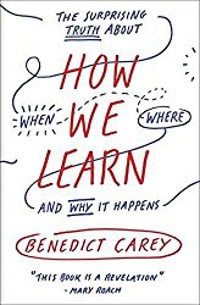 I recently wrote about list writing as a way to exercise your creativity muscles. Lists aren’t the only things that you can write to give yourself a mental workout though. All writing pushes your brain in some way or another. Whether its recall, imagination, or research, the mind is put through its paces – and that’s a good thing!
I recently wrote about list writing as a way to exercise your creativity muscles. Lists aren’t the only things that you can write to give yourself a mental workout though. All writing pushes your brain in some way or another. Whether its recall, imagination, or research, the mind is put through its paces – and that’s a good thing!
Creating is fun and, when properly focused, profitable as well.
Creative writing especially targets those often hard to focus idea muscles. The nice thing about creativity is that it really is like a muscle; the more you use it, the stronger it gets. And just like any other muscle, once it’s whipped into shape, it’s good for more than just the activity you used to work it out. Doing barbel curls strengthens your biceps. Once strengthened, those bigger arms are good for not just lifting weights, but for lifting, throwing and carrying all kinds of things – whether it be for sports or work or whatever. Similarly, a sufficiently exercised creativity muscle is good for generating all kinds of ideas – not just the type you used to work out with. So whether you’re a painter, sculptor, photographer, inventor, entrepreneur, or even a writer – creative writing can help you help yourself to new ideas.
Here are a few creative writing exercises that just might help you kick that idea muscle of yours in the pants, and kick-start your own idea generation in the process, regardless of your specific idea needs:
Poetry
Poetry is a time-honored creative writing exercise and an art form in its own right. While poetry is a fairly abstract notion for some, there are a number of more strictly defined poetic methods which are a great place to start:
- Haiku – Stick to the basics when starting to write Haiku as a creative exercise; 5-7-5. What can you say in three short lines?
- Limerick – Another great short format: Five lines, AABBA rhyming, and dirty or obscene humor. What’s not to love?
- Song – Most of the poetry that folks are familiar with today strikes the heart of poetry’s past; song lyrics. So go all Weird Al and write some new lyrics to your favorite songs.
Wordplay
Here’s a game that you can play by yourself or with like-minded friends: Write a sentence. Any sentence. Or steal one from a book, song, or poem. Now re-write that sentence as many times as you can by changing at least one word but keeping the meaning the same.
If playing with others, you can do this collaboratively, as a brainstorm. Or, you can each make your lists and compete to see who creates the most.
If exercising by yourself; write as many alternative sentences as you can and then, when you get stumped, use a thesaurus to keep going.
Letters
Letter writing is another old-school writing activity that gets a bit less attention today than it once did. It’s also a writing exercise that brings the promise of a little extra bang for your buck (or perhaps treasure for your time in this case).
Here’s how it works: Write a message to someone you respect. Bonus points for someone you’ve never met. Research this person and their current or historical ventures a bit. Come up with a list of ideas and/or a list of questions tailored to them specifically. Wrap your ideas and questions in a short but respectful and informed message. Tell them why you are writing them (because you know of and respect them and their work) and a bit about who you are (but not too much).
The exercise is twofold: Making a list of people you’d like to send such a letter to, and then creating a list of ideas and questions for each of them. This will certainly stretch your idea muscles a bit. The extra treasure for your time comes in the fact that some (perhaps even many, most, or all) of these folks will write you back. They may thank you for your ideas, answer your questions or even invite you to work with them. Who knows, they may become an invaluable partner or mentor in your future endeavors.
Two important tips if do you choose to take on this idea sparking exercise:
- Buy stamps. Yes, you could send your message(s) vie email. Though, there is something special about receiving a physical letter. Think of how many emails you receive every week. Now think back to the last letter you received. I don’t know about you, but other than holiday and birthday cards I don’t receive much personal, physical mail. I’d probably take note of any that I did, and I assume others would too.
- Be real. No one likes spam, and even the most well-intentioned form letter can end up looking and feeling like spam. This exercise is about making a personal connection. Spend a little time getting to know about the person you are writing to. Be honest about your self and your motivations. Whoever reads your letter will know the difference – and you might just make their day!
Stories
Don’t get intimidated! Writing a story can be a massive undertaking, but it doesn’t have to be. Here we are talking about short, easy stories to get the cogs in your brain turning – not about writing the great American novel, or any other novel or national epic for that matter.
One approachable starting place is to write the story of what you did yesterday. This works on your writing skills and flexes your memory. To exercise that idea muscle as well, you can embellish the story with creative language or artistic license.
Try recording the real events of your day but changing the scene. What would yesterday have looked like if you lived on a spaceship in transit to another galaxy? What if you were a secret agent and your day job was just a cover? How about a robotic Invasion of the Body Snatchers type situation where you are the only human left on earth and everyone else you interact with is actually a centrally controlled droid? Again, the story doesn’t have to be great – this is a personal exercise to get your creative juices flowing, and no one else ever has to see the story. You might end up surprising yourself though.
Once one day becomes easy, try basing the story on last weekend, or the whole of last week or month…
You don’t actually have to change anything to make this a creative exercise. Describing the details of your recent past in an entertaining way requires creativity in addition to recall. Simile, metaphor, and personification are all creative figures of speech which are used to turn the mundane into the masterful. You can also play with alliteration, hyperbole, and idioms. The list goes on.
A bonus of this exercise is that if done regularly, it will help cause you to be more present – to take notice of where you are, what you are doing, and what’s going on around you. There’s a good chance that in addition to having more material for your next story writing exercise, you’ll start finding inspiration all around you, all the time, once you start paying that type of attention to your world.
Good Luck!






[…] background-position: 50% 0px; background-color:#222222; background-repeat : no-repeat; } chrisgrundemann.com – Today, 9:23 […]
My thanks for your insightful thoughts on becoming a better writer. I have recently started writing again and was looking for some additional inspirations.
Many thanks,
Steve